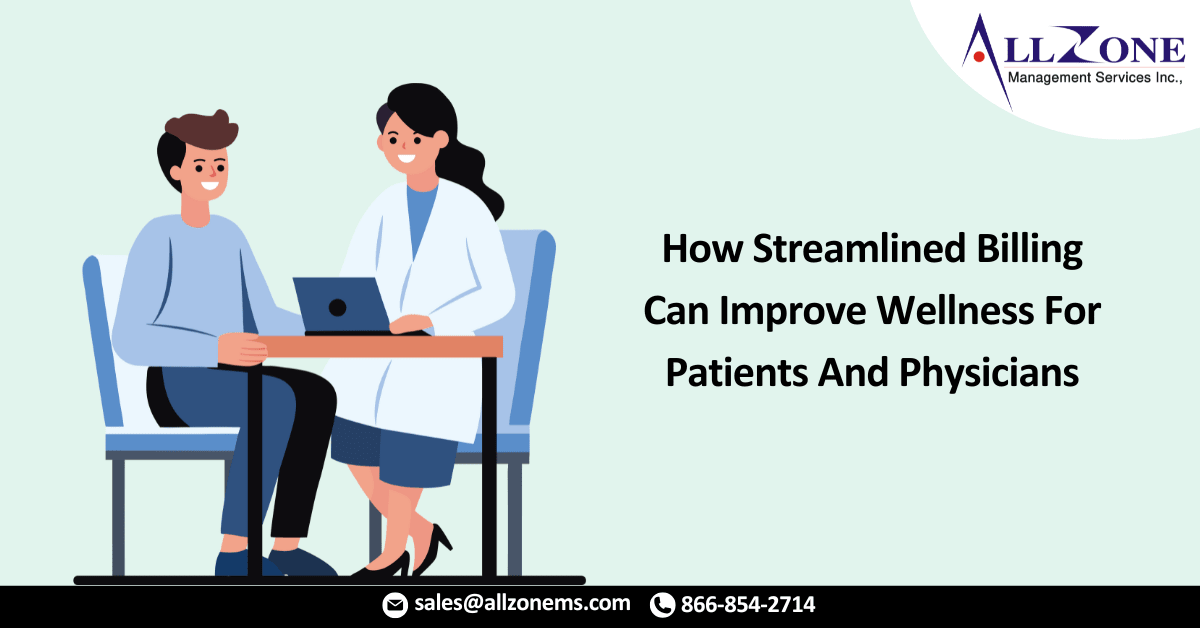In the coming decade, physicians and patients will grapple with intertwined challenges. A mounting need for physicians, projected to face a shortage of up to 124,000 professionals, coincides with evolving patient expectations favoring seamless digital interactions.
How can medical practices navigate heightened patient demands amidst a diminishing workforce? Drawing from my experience collaborating with numerous healthcare providers nationwide, I’ve witnessed firsthand the advantages that an optimized billing strategy can offer to both patients and physicians.
By embracing digital solutions, practices can automate administrative tasks and enhance the patient journey. This article delves into how healthcare organizations can refine their billing approach to enhance overall well-being and provide robust support for their revenue cycle teams.
The Necessity of Prioritizing Digital-First Patient Engagement
While numerous industries have adeptly transitioned into the digital era, the healthcare sector, as insiders are well aware, faces elevated stakes and often exhibits deliberate caution in adopting novel engagement solutions.
A patient engagement strategy rooted in digital channels resonates with the modern patient’s sensibilities. In an age where financial transactions, from purchasing coffee to planning vacations, are executed with a mere few taps, it’s only natural for individuals to anticipate a similar seamlessness in their healthcare encounters. Patients aren’t merely contrasting their healthcare payment journey with others in the same domain; they’re benchmarking it against their interactions across diverse industries.
Allocating resources to technological tools that facilitate and prioritize digital invoicing and payments ensures that bills are disseminated promptly and effectively. This translates to reduced time between service delivery and payment, ultimately fostering healthier financial fluidity for healthcare practices.
Each instance a physician expends on administrative duties marks a moment diverted from direct patient care. By harnessing technology for backend tasks, physicians aren’t solely refining processes; they’re also restoring valuable time and focus to the physician-patient relationship.
Enhancing Patient-Centric Billing Communication for a Provider’s Efficient Revenue Cycle
When patients are presented with a medical invoice, they are essentially appraising their entire healthcare journey. For numerous individuals, this invoice serves as a tangible point of contact—a reflection of their interactions with their physician, spanning from the initial appointment to subsequent post-care follow-ups. Ensuring the transparency, accessibility, and comprehensiveness of this invoice plays a pivotal role in cultivating patient trust and enhancing the physician’s professional standing.
Physician practices should give careful consideration to the effective utilization of text messages and emails as integral components of a well-rounded billing communication strategy. The convenience inherent in a text message alert, which promptly notifies patients about the availability of their bill and provides a direct link for viewing and payment, fosters seamless and actionable engagement. Emails present opportunities for more detailed correspondence, including itemized bill breakdowns, payment guidelines, and supplementary resources pertaining to insurance or third-party financing.
While it remains essential to accommodate patients who prefer traditional mailed statements, these digital communication tactics align harmoniously with the preferences of today’s technology-proficient patient demographic.
Digital Approaches Prior to Appointments
We stand on the brink of a reality where the majority of a patient’s administrative and billing responsibilities can be addressed prior to their initial medical consultation. This transformation is driven by the capabilities of pre-appointment check-in systems. These systems empower patients to complete essential documentation, validate insurance particulars, and even execute pre-appointment payments through digital channels, resulting in heightened revenue cycle efficiency and diminished wait times within the clinic environment.
Predictably, patients do not relish the prospect of paperwork and repetitive form submissions. Through the digitization of this process, healthcare providers not only demonstrate a regard for patients’ time but also establish a positive atmosphere for their impending medical visit.
For physicians, the advantages are twofold. Primarily, they gain access to well-structured, timely information, facilitating thorough preparation for each consultation. Secondly, it substantially curtails the post-appointment administrative workload.
By harnessing technology to enhance billing communication and streamline preliminary appointment procedures, medical practices can surpass patient expectations, elevate operational efficiency, and underscore their commitment to prioritizing patient care
Clear and Automated Billing Structures
Doubt gives rise to skepticism, and a significant 41% of patients express that they perceive a lack of transparency from their healthcare providers concerning the expenses linked to their medical care. From unclear breakdowns to unforeseen charges, the medical billing process can swiftly evolve into a noteworthy stress inducer. Nevertheless, with the appropriate patient payment technology tools, medical practices can orchestrate a transformative shift in this experience.
Automated billing systems, seamlessly woven into a provider’s operational flow, guarantee the punctual and precise dispatch of invoices. Through the automation of numerous routine billing duties, the occurrence of errors is minimized, and operational efficiency is optimized. Consequently, this notably alleviates the administrative load on revenue cycle teams.
Crafting a Futuristic Healthcare Ecosystem
I have personally observed the profound possibilities that arise from the integration of cutting-edge solutions into the healthcare revenue cycle. Collaborating with payment technology vendors can emerge as a pivotal partnership in reshaping the billing engagement approach of healthcare providers.
Undoubtedly, the horizon of healthcare lies in the realm of digitalization. With the mounting demands placed upon physicians and the dynamic shifts in patient expectations, technology will act as the bridge, safeguarding the prominence of quality care. Through strategic investments in the appropriate tools and platforms, medical practices can ensure their readiness to navigate present challenges and confront the unknowns of the future.

